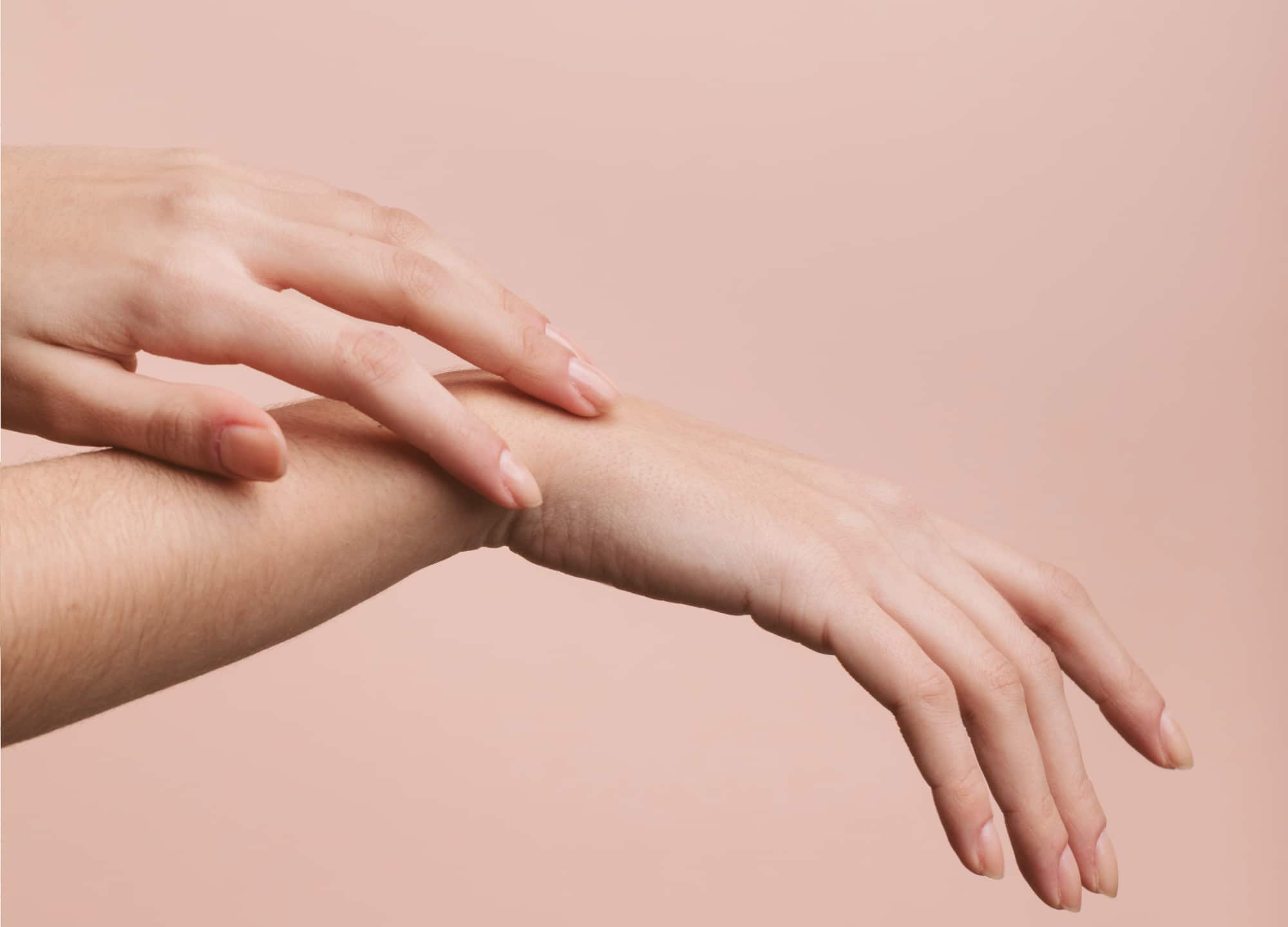Our annual Most Worth It list recognizes the most-loved aesthetic procedures—from noninvasive tweaks to the gold standard in surgery—as chosen by RealSelf community members like you. This story highlights one or more of the 44 Most Worth It honorees for 2022; you can see the full list and learn more about patients’ favorite procedures here.
This article has been medically reviewed for accuracy by Plano, TX board-certified plastic surgeon Dr. Vu Ho on November 5, 2020.
The eyes may be the windows to the soul, but the hands are the windows to your true age. Just like the skin on our face, the skin on our hands undergoes inevitable changes as we get older. The big difference? You’re likely not treating it to the same anti-aging routine or coating it in youth-boosting lotions and potions. TL;DR: the hands are often neglected and, as such, can end up looking, well, old. Ahead, top dermatologists explain why this happens—and how to make hands look younger.
Why does aging occur on the hands?
Skin aging anywhere on the body is caused by a combination of intrinsic and extrinsic factors. The former are things you can’t control—namely, the passage of time and genetics. “As we age, we lose collagen and elastin, and skin becomes thin, crepey, and wrinkled. In the tops of the hands, there’s also a loss of fat and muscle atrophy, which makes them look bonier, with more prominent veins and joints,” explains Dr. Y. Claire Chang, a board-certified dermatologist in New York City. Adding insult to injury, levels of natural moisturizing components in the skin, such as ceramides and hyaluronic acid also decline, leaving hands feeling perpetually dry as you get older.
On the extrinsic side of things, external factors such as pollution and smoking are aging culprits, though sun exposure is public enemy number one. “Our hands are exposed to the sun year-round, including when we’re driving,” points out Dr. Nancy Samolitis, a board-certified dermatologist in Los Angeles. Couple that with the fact that many people neglect to apply sunscreen to their hands, and you have a recipe for unsightly brown spots and discoloration.
As is the case with any type of skin aging, exactly when these issues show up—aka when you may start to feel like you have “old-looking” hands—varies, based on the individual. However, the doctors we spoke with agreed that most women typically first notice these issues in their late 30s to early 40s.
What are the best ways to get younger-looking hands?
The universal anti-aging rule applies: prevention is easier than correction. First and foremost, use sunscreen daily. Once you’ve applied it to your face, rub a dime-size dollop onto the back of each hand. Dr. Samolitis also suggests keeping powder sunscreens on hand (pun intended), for reapplication. They’re quick and easy to swipe on, and you can even stash one in your car as a reminder to reapply before you drive, she says.
When it comes to reversing existing wrinkles, age spots, and laxity, in-office procedures are largely more effective than any topical product (though more on anti-aging hand cream to come). According to Dr. Michelle Sieffert, a plastic surgeon in Dublin, Ohio, taking a multipronged treatment approach is ideal; using multiple modalities to treat different issues will yield the best end result, she says. A few common options:
Fillers: “Injectable hyaluronic acid fillers work by replacing lost volume to the skin, which helps camouflage visible tendons and veins,” explains Dr. Sieffert, who notes that results can last up to a year. Dr. Chang adds that the plumping effect also reduces both laxity and wrinkles. (Speaking of which, Botox for hands isn’t really a thing. The wrinkles on your hands generally aren’t dynamic wrinkles caused by muscle movement, which is what Botox targets.) There are currently two fillers on the market that are FDA-approved for hand rejuvenation: Restylane Lyft, a hyaluronic acid filler, and Radiesse, a calcium hydroxylapatite filler that works by stimulating collagen production, says Dr. Chang.
IPL: “This light treatment emits multiple wavelengths, allowing it to simultaneously target broken capillaries, redness, and brown spots, and is effective for improving the skin on the backs of the hands,” says Dr. Chang. While it’s a good option for those whose primary concerns are sun-damage-induced discoloration, there are a few caveats. You will need a series of treatments, for best results; it won’t restore lost volume; and those with dark skin aren’t good candidates, since they’re at increased risk for side effects such as discoloration changes and scarring.
Lasers: Combining the best of both worlds, lasers are a great way to reduce brown spots and redness, tighten crepey skin, and minimize the appearance of fine lines, says Dr. Sieffert. But not all lasers are created equal. Q-switched lasers (such as the Nd:YAG) target pigment in the skin and can be used to remove brown spots, though resurfacing lasers (such as Fraxel) offer the most bang for your buck. These lasers trigger a wound-healing response in the skin, which can ultimately lead to an improvement in elasticity as well as skin tone and texture, explains Dr. Chang. Even just one treatment can yield great results that can last for years… so long as they’re maintained with sun protection and proper skin care afterward, adds Dr. Samolitis.
However, it’s worth noting that not all of these lasers may be appropriate for all skin tones. The pigment-targeting ones can be especially problematic; for example, the alexandrite laser should not be used on dark skin, whereas the Nd:YAG may be okay, notes Dr. Chang. Resurfacing lasers generally can be used on all skin tones, though the settings should be adjusted accordingly, she adds. The bottom line: Seeking board-certified physicians who have experience in using lasers is paramount for ensuring the best, and safest, result.
Related: The Ultimate Guide to Anti-Aging Your Hands—at Home and at the Doctor’s Office
What are the best anti-aging hand creams?
Speaking of skin care products, it’s a good idea to seek out hand creams that contain the same proven anti-aging ingredients as the moisturizers you’d use on your face, advises Dr. Samolitis. (And don’t forget the sunscreen, of course.) It’s no surprise that retinoids are one good option: “Although there have been no specific studies for the hands, retinoids have an abundance of evidence showing their efficacy in treating photodamage and increasing collagen production,” Dr. Chang explains. Alpha hydroxy acids, such as glycolic acid, are ideal for increasing cell turnover and lightening brown spots, while antioxidants such as vitamin C and niacinamide can help brighten the skin and improve collagen production, she adds. And finally, don’t forget the hydration component—ceramides, hyaluronic acid, and shea butter are all good ingredients to look for in your hand lotion.
Find the derm-recommended ingredients above in our picks for the best hand creams.
PCA Skin C&E Hand Renewal, $80
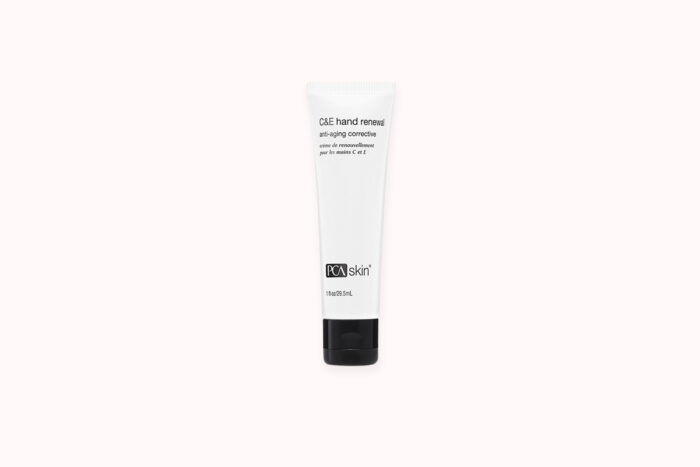
Vitamin C packs a three-for-one punch, offering antioxidant protection, stimulating collagen production, and helping to fade dark spots. In other words, it’s a single ingredient that can address multiple signs of aging on your hands. Here, it’s paired with nourishing vitamin E, another powerful antioxidant.
DerMend Fragile Skin Moisturizing Cream, $30
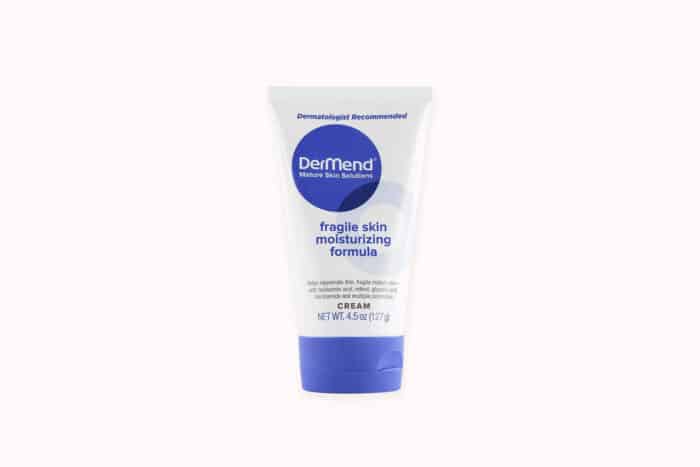
“This is packed with all of my favorite anti-aging ingredients, including retinol, niacinamide, and glycolic acid,” says Dr. Samolitis. While it’s marketed for the fragile skin most people don’t develop until a later age, it can be used at any time and is effective at treating dry skin anywhere on the body, she adds.
Verso Hand Serum, $55
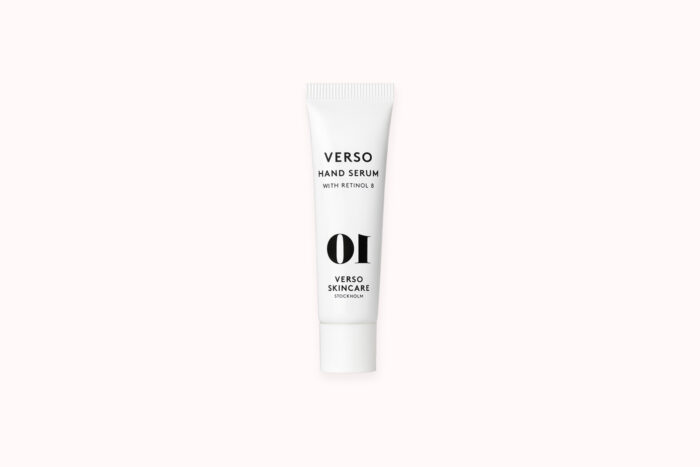
A unique retinoid in this formula stimulates collagen production, but the benefits don’t stop there. It also contains antioxidant-rich turmeric and skin-strengthening ceramides, in a nongreasy lotion specially formulated to treat the dryness on the backs of the hands.
Skinfix Eczema+ Hand Repair Cream ($18)
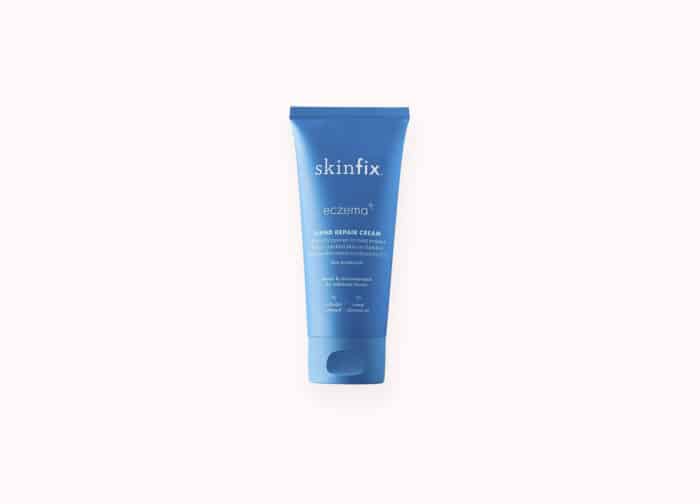
Formulated with soothing aloe and colloidal oatmeal, plus glycerin to lock in moisture, this hand treatment addresses extremely dry, cracked, and sensitive skin.
BeautyCounter Hand Savior Radiance Boosting Serum + Hand Sanitizer ($32)
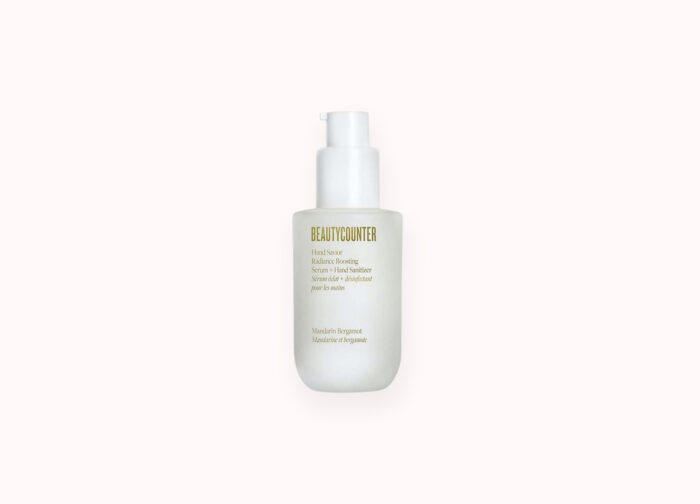
Most of us have been overusing hand sanitizer since the pandemic began and have the dry hands to show for it. But you don’t need the highest alcohol content to get protection: BeautyCounter’s sanitizer, which doubles as a brightening serum, is made with 60% organic sugar-derived alcohol and has been clinically tested to kill 99.99% of bacteria.
Supergoop! Handscreen SPF 40, $14
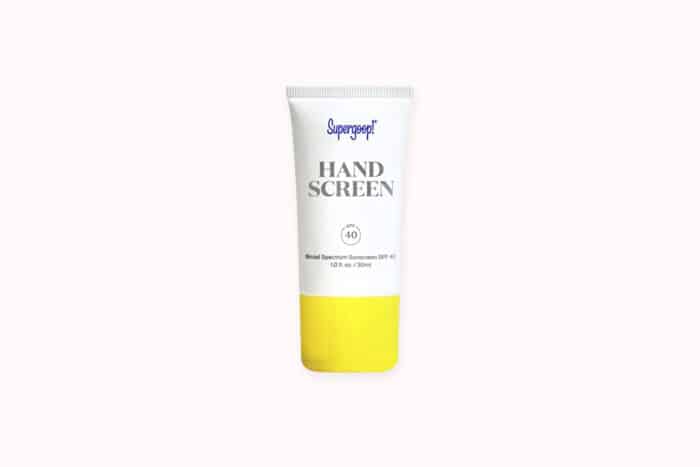
Yes, you can definitely apply your facial sunscreen to your hands, but if you’d prefer to have a dedicated hand SPF product, try this one. Along with that oh-so important protection against UV rays, it also touts sea buckthorn extract, an antioxidant-rich fruit that can improve skin tone and texture, plus deeply hydrating argan and meadowfoam seed oils.







